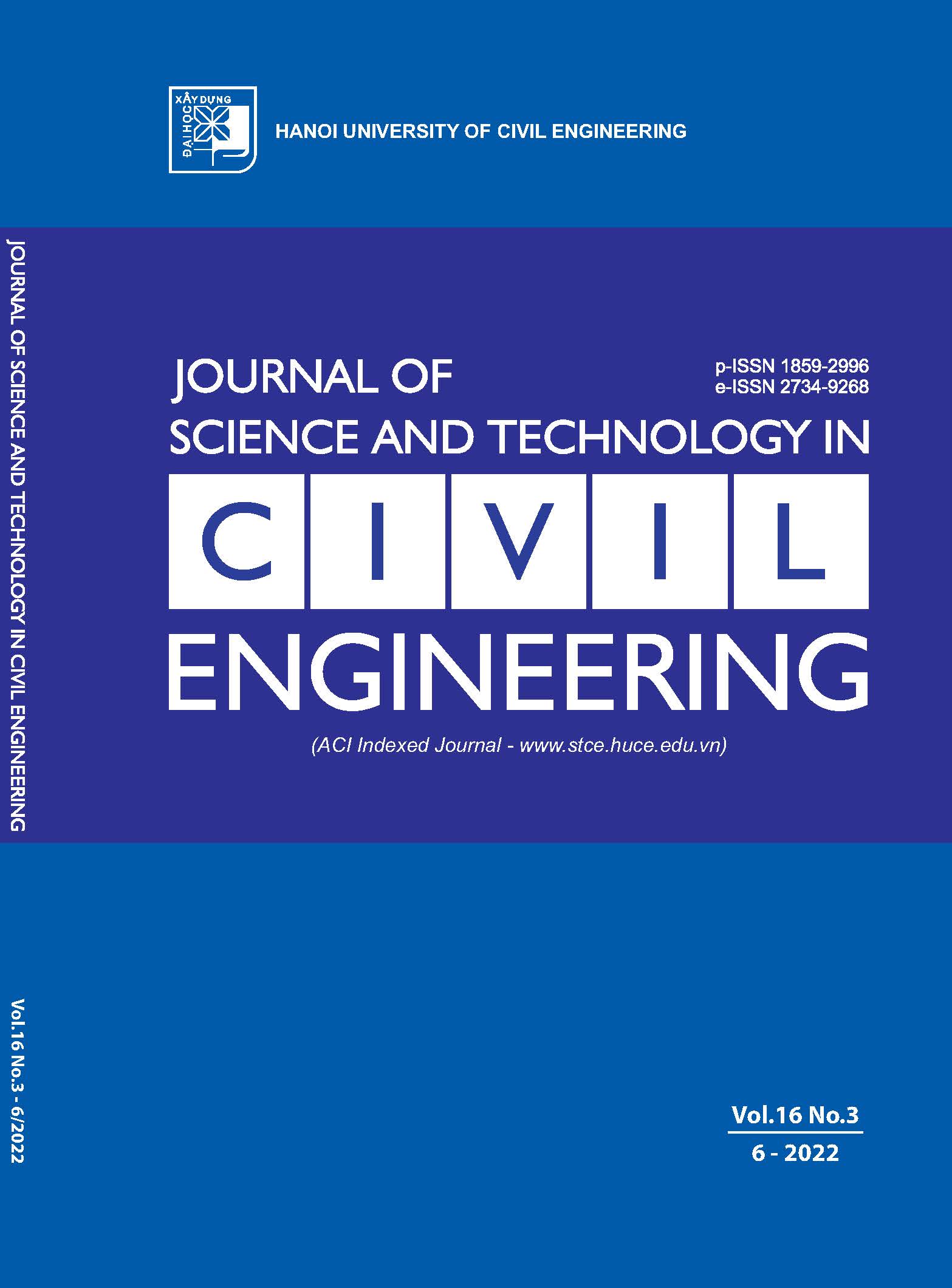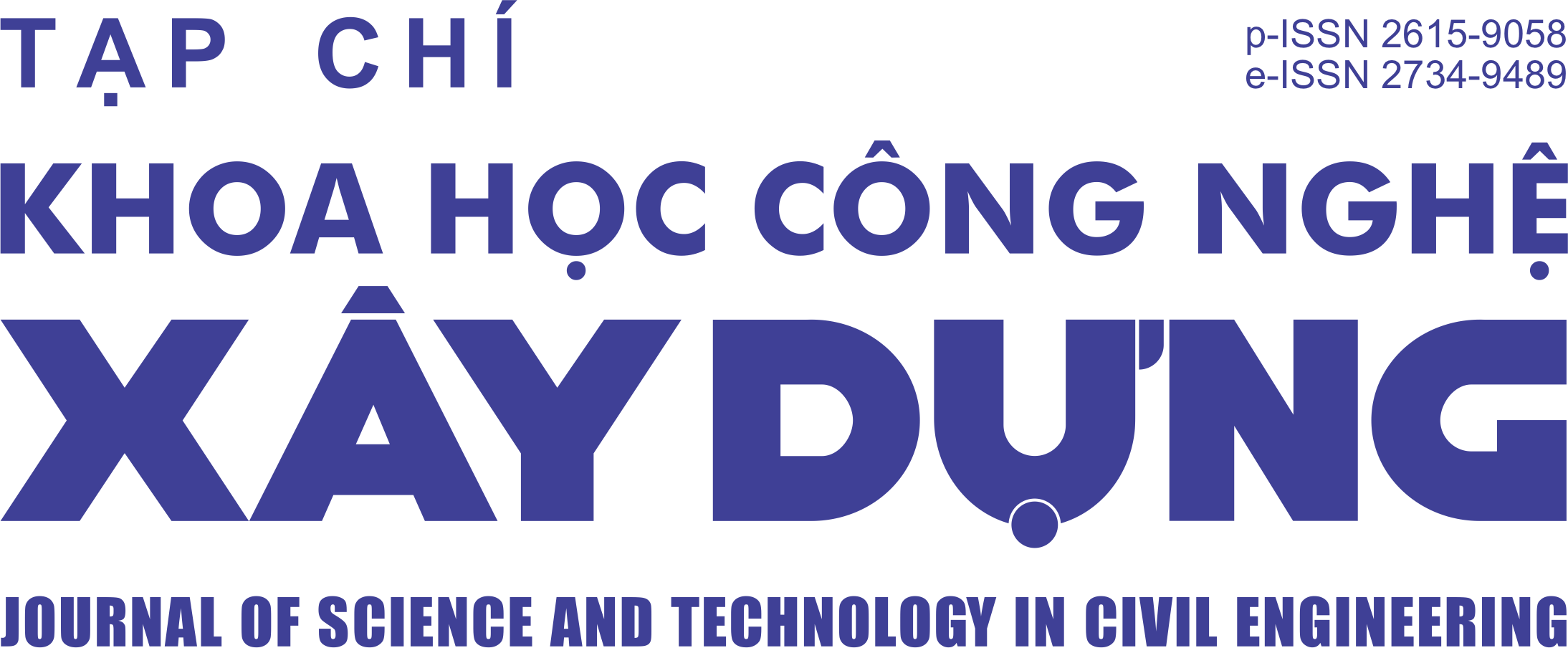Evaluation of long-term strength and durability performance of cementitious composites with low polypropylene fiber content and local river sand
Abstract
This study aims to investigate the long-term mechanical properties and durability of cementitious composites (CC) with low polypropylene (PP) fiber content and local river sand. The CC samples were prepared with different water-to-binder (w/b) ratios (0.20, 0.25, and 0.3), low PP fiber content (0.6% by mass of binder), locally available river sand, and fly ash (FA) sourced in the Mekong Delta region, corresponding to the mixture name WB20, WB25, and WB30, respectively. Then, the mechanical properties were investigated through compressive and flexural strengths and ultrasonic pulse velocity tests, while durability was assessed via chloride ion penetration and sulfate resistance. The results revealed that the mixture with the w/b of 0.25 achieved the best performance in terms of both mechanical and durability performance due to the optimal conditions of compaction, mixing water content, and also the latent pozzolanic reaction of FA in the hydrated cementitious composites. Besides, the CC samples with 0.6% PP fiber exhibited ductility behavior under compression and flexure, characterizing that CC samples do not completely separate from each other when damaged due to the fiber bridging effect. Moreover, the CC samples obtained excellent long-term durability (up to 120 days old) in terms of sulfate attack and chloride resistance in the following order WB25 > WB20 > WB30. The results of this study confirm the applicability of the local materials for producing good quality and low-cost cementitious composites.
Downloads
Copyright (c) 2022 Hanoi University of Civil Engineering

This work is licensed under a Creative Commons Attribution-NonCommercial-NoDerivatives 4.0 International License.
1. The Author assigns all copyright in and to the article (the Work) to the Journal of Science and Technology in Civil Engineering (JSTCE) – Hanoi University of Civil Engineering (HUCE), including the right to publish, republish, transmit, sell and distribute the Work in whole or in part in electronic and print editions of the Journal, in all media of expression now known or later developed.
2. By this assignment of copyright to the JSTCE, reproduction, posting, transmission, distribution or other use of the Work in whole or in part in any medium by the Author requires a full citation to the Journal, suitable in form and content as follows: title of article, authors’ names, journal title, volume, issue, year, copyright owner as specified in the Journal, DOI number. Links to the final article published on the website of the Journal are encouraged.
3. The Author and the company/employer agree that any and all copies of the final published version of the Work or any part thereof distributed or posted by them in print or electronic format as permitted herein will include the notice of copyright as stipulated in the Journal and a full citation to the Journal as published on the website.







